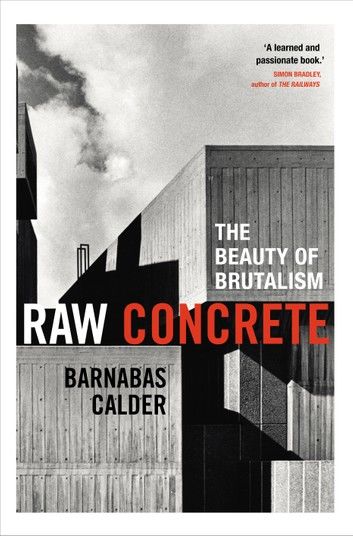| FindBook |
有 1 項符合
Raw Concrete的圖書 |
 |
Raw Concrete 作者:Barnabas Calder 出版社:Random House 出版日期:2016-04-21 語言:英文 |
| 圖書選購 |
| 型式 | 價格 | 供應商 | 所屬目錄 | 電子書 |
$ 352 |
藝術家、建築師與攝影師 |
|---|
| 圖書館借閱 |
| 國家圖書館 | 全國圖書書目資訊網 | 國立公共資訊圖書館 | 電子書服務平台 | MetaCat 跨館整合查詢 |
| 臺北市立圖書館 | 新北市立圖書館 | 基隆市公共圖書館 | 桃園市立圖書館 | 新竹縣公共圖書館 |
| 苗栗縣立圖書館 | 臺中市立圖書館 | 彰化縣公共圖書館 | 南投縣文化局 | 雲林縣公共圖書館 |
| 嘉義縣圖書館 | 臺南市立圖書館 | 高雄市立圖書館 | 屏東縣公共圖書館 | 宜蘭縣公共圖書館 |
| 花蓮縣文化局 | 臺東縣文化處 |
|
|
SHORTLISTED FOR THE ALICE DAVIS HITCHCOCK AWARD
'Brilliant' Elain Harwood
'Part history, part aesthetic autobiography, wholly engaging and liable to convince those procrastinators sitting (uncomfortably) on the concrete fence' Jonathan Meades
'A learned and passionate book' Simon Bradley, author of The Railways
‘A compelling and evocative read, meticulously researched, and filled with insight and passion’ Kate Goodwin, Head of Architecture, Royal Academy of Arts
The raw concrete buildings of the 1960s constitute the greatest flowering of architecture the world has ever seen. The biggest construction boom in history promoted unprecedented technological innovation and an explosion of competitive creativity amongst architects, engineers and concrete-workers. The Brutalist style was the result.
Today, after several decades in the shadows, attitudes towards Brutalism are slowly changing, but it is a movement that is still overlooked, and grossly underrated.
Raw Concrete overturns the perception of Brutalist buildings as the penny-pinching, utilitarian products of dutiful social concern. Instead it looks a little closer, uncovering the luxuriously skilled craft and daring engineering with which the best buildings of the 1960s came into being: magnificent architectural visions serving clients rich and poor, radical and conservative.
Beginning in a tiny hermitage on the remote north Scottish coast, and ending up backstage at the National Theatre, Raw Concrete embarks on a wide-ranging journey through Britain over the past sixty years, stopping to examine how eight extraordinary buildings were made – from commission to construction – why they have been so vilified, and why they are beginning to be loved. In it, Barnabas Calder puts forward a powerful case: Brutalism is the best architecture there has ever been, and perhaps the best there ever will be.
|











